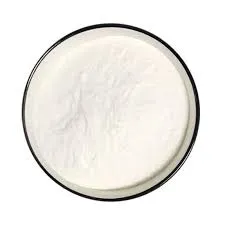
Nov . 22, 2024 01:04 Back to list
cement bonding additive
The Role of Cement Bonding Additives in Construction
Cement is one of the most widely used construction materials worldwide, known for its durability and strength. However, the performance of cement can often be enhanced by the incorporation of various additives. Among these, cement bonding additives play a crucial role by improving the adhesion properties of cement mixes, thereby ensuring better performance in a wide range of applications. This article explores the significance of cement bonding additives, their types, benefits, and applications in modern construction.
Understanding Cement Bonding Additives
Cement bonding additives are materials added to cement mixtures to improve their bonding capabilities with various substrates. These additives can be organic or inorganic and are designed to enhance the chemical composition and physical properties of the cement. Common bonding additives include polymers, silica fume, and different proprietary formulations that cater to specific construction needs.
Types of Cement Bonding Additives
1. Polymeric Additives These are perhaps the most common types of bonding agents. They are typically water-based and can improve the flexibility, adhesion, and water resistance of cement. Examples include polyvinyl acetate (PVA) and styrene-butadiene rubber (SBR) emulsion.
2. Chemical Admixtures These additives enhance the chemical performance of cement. They can modify the setting time, improve workability, and increase resistance to environmental factors. Examples include superplasticizers and retarders.
3. Mineral Admixtures This category includes materials like silica fume, fly ash, and ground granulated blast-furnace slag. These additives enhance the cement matrix's density and durability, which contributes to better bonding characteristics.
Benefits of Using Cement Bonding Additives
cement bonding additive

1. Enhanced Adhesion One of the primary advantages of using bonding additives is the significant improvement in the adhesion between cement and different substrates, including concrete, masonry, and plaster. This enhanced bonding is essential for structural integrity.
2. Improved Durability Additives can help reduce porosity and permeability, resulting in a stronger finish that resists cracking, spalling, and weathering. This extends the service life of the construction.
3. Increased Flexibility Many bonding additives impart flexibility to the cement, which is particularly beneficial in environments subject to temperature fluctuations and movement. This flexibility helps prevent cracking and structural failure.
4. Resistance to Environmental Factors Additives can improve the resistance of cement to various environmental challenges such as moisture, chemicals, and freeze-thaw cycles, making them suitable for a wide range of applications, including marine, industrial, and residential construction.
5. Cost-Effectiveness While there may be an upfront cost associated with these additives, the long-term benefits often justify the investment. Enhanced performance leads to fewer repairs and maintenance requirements over time.
Applications of Cement Bonding Additives
The applications of cement bonding additives are extensive. They are widely used in
- Flooring Systems To ensure proper adhesion between layers of different materials (e.g., asphalt, tile, and concrete). - Repair Works For bonding new concrete to existing structures during repairs and renovations. - Mortars and Plasters To improve the performance of mixed mortars and plaster, enhancing bonding to substrates. - Precast Elements In the manufacture of precast concrete elements to ensure strong inter-module connections.
Conclusion
Cement bonding additives represent a significant advancement in construction technology, providing enhanced adhesion, durability, and flexibility to cement-based materials. As the demand for high-performance construction materials grows, the role of these additives will become increasingly vital in ensuring structural integrity and longevity. Understanding and utilizing these innovative materials can lead to superior construction practices that meet the challenges of modern building demands.
-
Versatile Hpmc Uses in Different Industries
NewsJun.19,2025
-
Redispersible Powder's Role in Enhancing Durability of Construction Products
NewsJun.19,2025
-
Hydroxyethyl Cellulose Applications Driving Green Industrial Processes
NewsJun.19,2025
-
Exploring Different Redispersible Polymer Powder
NewsJun.19,2025
-
Choosing the Right Mortar Bonding Agent
NewsJun.19,2025
-
Applications and Significance of China Hpmc in Modern Industries
NewsJun.19,2025







